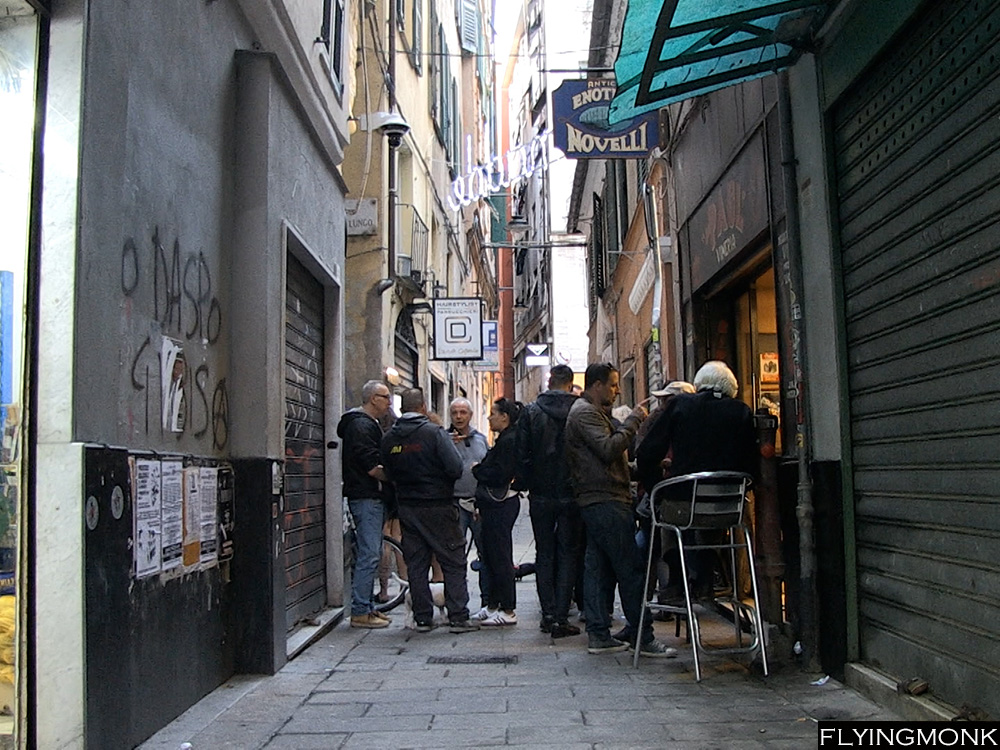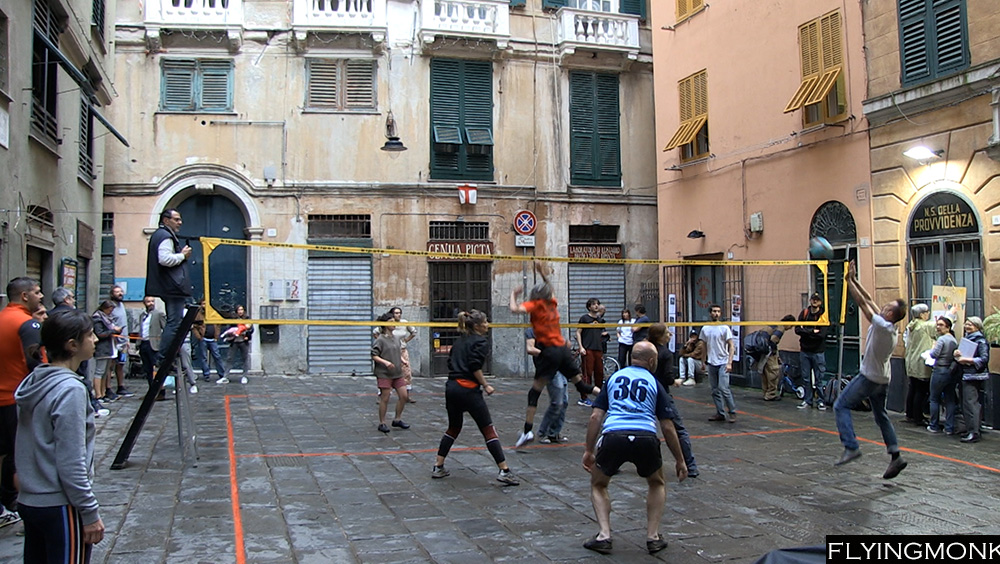
When walking inside the mirrors’ hall of Genoa’s Palazzo Reale you feel a bit like in “Last Year in Marienbad”, where the images are reflected back to themselves, disorienting, multiplying like in the dream the movie wanted to portray. The museum and its remarkable art collection occupies a palace, that changed hands for about two centuries between the local patrician families Balbi and Durazzo till it came under the ownership of the House of Savoy that associated to it the Royal title.

I found fascinating in all these palaces and art galleries in Bergamo, Torino and now in Genoa, the numerous groups of pupils from middle school and high school who came for an art lesson. They sat in circles on the floor while the teacher or a museum curator explained the paintings and the history or the religious facts associated with them. The explanations were sometimes way too long and the kids were drifting to their phones. But I could see that soon they put the phones back in their pockets and continue listening quietly, attentive to the explanations.

Squeezed between the mountains and the sea Genoa gives credit to Janus, the “two-faced” god, for its founding. The city even has a well, named Pozzo di Giano (Janus’ Well), built around 1600, that is said to be the exact spot where Genoa was born, a place where sailing lines and shrouds for the ships were made.

But Genoa’s history and its maritime prowess blessed the city with layers of civilization and a plethora of palaces, churches and squares that made Petrarch to name the city, La Superba.

And probably the most striking of all the city’s building is Genoa’s San Lorenzo Cathedral. Its facade and interior’s horizontal black and white marble stripes is a sign of the medieval nobility of the Republic of Genoa, only four families in Genoa having the privilege to decorate the buildings they founded in this manner, Doria, Spinola, Fieschi and Grimaldi. However the black and white stripes were also widespread in Tuscany, the color appearing on the cities’ coat of arms.

On the cathedral’s portico each column is decorated with sculpted motives. The interior shows the combination of the Gothic arches topped by Romanesque striped arches, proof of the mastery of the French artists who built it. It was consecrated as the cathedral of Genoa in 1118, more than a millennium ago. The financial success of the maritime commerce enabled the merchant families of Genoa to also establish one of the first universities in the world and the first credit bank in the world.

“Serge de Nîmes,” a blend of silk and wool used primarily for making sails and cover the merchandise on boats made its way to Genoa where the local traders, created a cotton version of it and dyed it blue using indigo traded from India. They marketed the new fabric as “blue of Genoa,” and soon the new fabric made its way across the Atlantic ocean following in the footstep – or better said sails – of Genoa’s native son Christopher Columbus. In the New World “Les Blue de Genes” ended up as fabric for a sort of very resistant pants for the working class, better known nowadays as … Blue Jeans.

Geno’s inner city is made up of a fascinating maze of alleys named by the locals carrugi. The complex structure of these narrow streets, charming now for a stroll of discovery, helped once defend the city of the enemies that always seemed to come from the sea.

It is said that the carrugi were built to defend against the Moors’ invasions, complicating the advance of the enemy armies and allowing the Genoese to build barricades and setting up ambushes.

It was developed as a typical medieval labyrinth once developed in castles and fortresses or in the Arab medinas.

Nowadays the carrugi still are beaming with life with locals playing volleyball in tiny squares…

…small stores selling great food and migrants and prostitutes finding cheaper housing.


You must be logged in to post a comment.